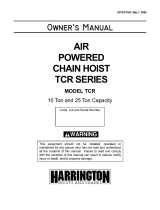
64
l
65
l
66
67
l
68
69
70
l
71
72
73
74
l
75
76
77
l
78
79
l
80
81
82
83
84
85
86
87
l
88
89
l
90
91
91A
l
92
93
94
l
95
96
97
98
99
. 100
l
101
102
103
104
105
106
*
I
1
1
1
1
MotorShaft
.................................................
Motor Shaft Rear Retaining Ring.
................................
Motor Shaft Front Retaining Ring
................................
Brake Driver Retainer.
........................................
Rear End Plate Bearing
.........................................
Rear End Plate.
..............................................
Rotor
.....................................................
Vane Packet (set of 7 Vanes)
.....................................
Cylinder
...................................................
Cylinder Dowel
..............................................
Front End Plate.
.............................................
Front End Plate Bearing.
........................................
Motor Retaining Washer.
........................................
ChainWheel
................................................
Chain Wheel Plain End Bearing
....................................
Chain Wheel Plain End Washer
....................................
Chain Wheel Splined End Bearing
..................................
Chain Wheel Splined End Washer.
..................................
Gear Frame Assembly
for ML25K
..........................................
for ML50K and ML100K
................................
Planet Gear Frame
for MLL25K
..........................................
for ML50K and ML100K
................................
Planet Gear Assembly (2)
for ML25K
..........................................
for ML50K and MLl00K
................................
Planet Gear Bearing (2 for each Gear) ............................
Planet Gear Thrust Washer (4)
...................................
Planet Gear Shaft (2).
........................................
Gear Frame Bearing.
.........................................
Brake Driver Bearing
.........................................
Ring Gear
..................................................
Ring Gear Gasket.
............................................
Brake Housing
...............................................
Brake Housing Bolt Seal (4).
....................................
Brake Housing Bearing Seal
......................................
Brake Driver
................................................
Brake Plate (4).
..............................................
Brake Disc (2)
...............................................
Brake Spring and Piston Housing Assembly
............................
Spring and Piston Housing.
.....................................
Spring (3)
................................................
Pressure Plate
..............................................
Piston
...................................................
Piston Large Seal.
.........................................
Piston Small Seal.
.........................................
Piston Nut
................................................
Pate
....................................................
Plate Screw (2).
............................................
Shoulder Bolt (4).
............................................
Lock Washer (4).
.............................................
Chain Anchor Bolt
............................................
...
* Not illustratea.
l
To keep downtime to a minimum, it is desirable to have on hand certain repair parts. We recommend that you stock
18
ML50K-316
MLK-120
MLK-119
ML50K-729
R2-24
ML50K-12
MR-53
MR-42-7
MR-3
R3H-434
MR-11
TB-394
MR-207
ML-740B
MR-593
MR-974
MR-988
MR-975
ML25K-A8
ML50K-A8
ML25K-8
ML50K-8
MRS-Al0
ML-A10
ML50K-654
ML50K-361
MR-191
ML50K-97
ML50K-318
ML50K-406
ML50K-3 1
ML50K-346
ML50K-27 1
HRA20A-990
ML50K-842
ML50K-834
ML50K-855
ML50K-A395
ML50K-395
ML50K-832
ML50K-A338
ML50K-A809
R2C-103
R00BR-210
ML50K-394
ML50K-981
CEll0-354
ML50K-7
D02-321
20BM-744






















